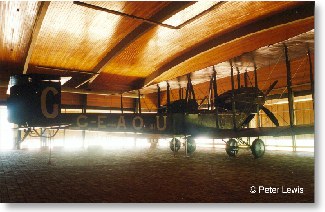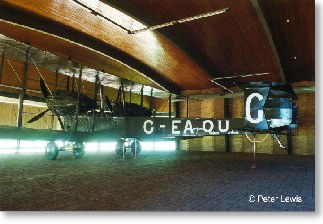
from Peter & Meredith's Australia Trip
Adelaide, South Australia
There are a number of great distance flights that stand out in aviation history - Alcock & Brown's trans-Atlantic flight of 1919, Lindberg's New York - Paris flight in 1927, Kingsford-Smith & Ulm's trans-Pacific Oakland - Brisbane flight of 1928.
Among these historic events, the Smith Brothers flight from Hounslow airfield (now Heathrow) near London, England, to Darwin, in the northern part of Australia, stand out as the moon-shot of its day. This flight, which took place during November - December 1919 as the result of the competition for a £10,000 prize, took 135 flying hours to cover 11,340 miles spread over 28 days. The skills required to complete this route in this time may be assessed by looking at the time taken by the second-placed crew - 6 months and 25 days! (That aircraft, an Airco DH9, may be seen on the Canberra page).
The Vickers Vimy as used by Ross and Keith Smith for their flight was the fastest load-carrier of its day. Designed as a military aircraft, the Great War ended before it could make it's mark in that sphere. Today, the Vimy is remembered as the the machine that pioneered not only the Transatlantic and England - Australia routes but also the Cairo - Cape Town route in 1920.
The Smith's Vimy G-EAOU became the property of the Australian Government after its historic flight. After some years at the National War Museum at Canberra was placed into storage. During transport from Canberra to Adelaide in 1957 it was damaged by fire, but was restored over the following two years. Now on display in a specially-built glass case at Adelaide Airport, it is a splendid memorial to the Smiths and their crew (engineers Shiers and Bennett).
(The aircraft is very difficult to photograph, as from inside the
glass case
the strong summer sun gives an extreme backlight situation).


